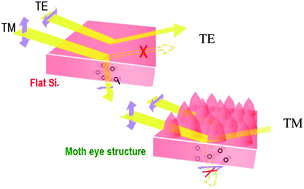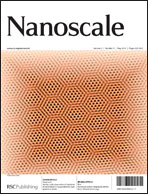Nanoscale of biomimetic moth eye structures exhibiting inverse polarization phenomena at the Brewster angle
Abstract
The unique functionalities of nanoscale structures in the natural world are an inspiration to the development of new nano-manufacturing techniques. For example, the cornea of the moth's eye features a sub-wavelength natural antireflective architecture. To date, almost all optical research into moth eye structures has been focused on their antireflective properties. No studies of inverse polarization phenomena at the Brewster angle have been reported, especially in biomimetic structures. For the first time, we discovered a unique inverse polarization phenomenon on moth eye structures that arises from TM-polarized light having a higher reflectance than TE-polarized light on moth eye structures at angles of incidence near the Brewster angle, unlike the behavior of polarized light on flat interfaces. Herein, we report a one-step


 Please wait while we load your content...
Please wait while we load your content...